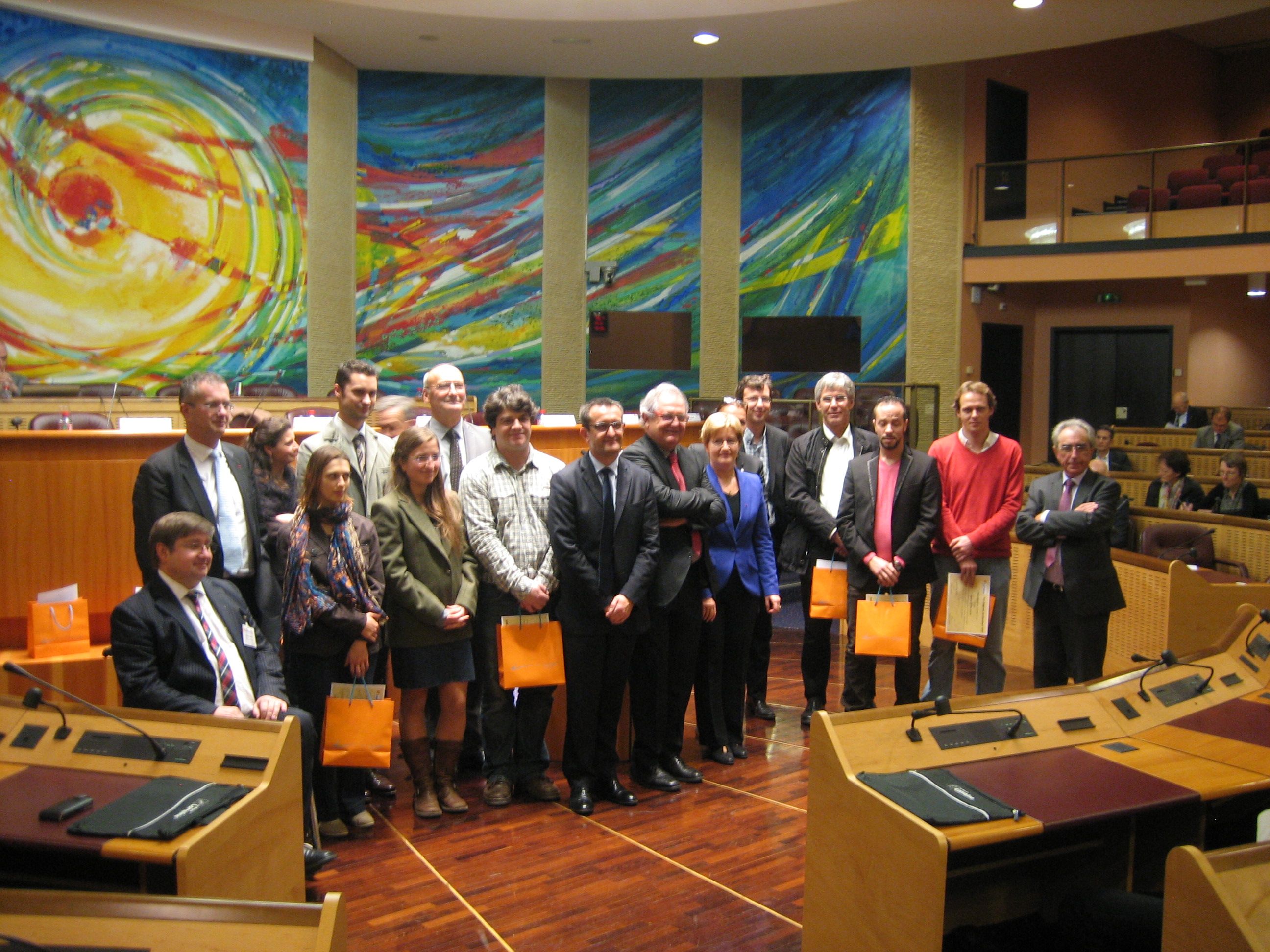Two papers involving IAM members have been accepted in Frontiers in Plant Sciences :
Biochemical and catalytic properties of classical dithiol plant glutaredoxins. J Couturier, JP Jacquot, N Rouhier. Frontiers in Plant Science
Abstract: Glutaredoxins (Grxs) are small oxidoreductases particularly specialized in the reduction of protein-glutathione adducts. Compared to other eukaryotic organisms, higher plants present an increased diversity of Grxs which can be classified into four classes. This work aimed at comparing the biochemical properties of dithiol class I Grxs, namely GrxC1, GrxC2, GrxC3 and GrxC4, in order to understand the existence of several isoforms presenting such a high sequence identity. In vitro measurements of oxidoreductase activity using the physiological glutathione reducing system and classical Grx substrates revealed that they display significantly different kinetic parameters which could be partly linked to differences in the redox potential and in the pKa value of the catalytic cysteine. In addition, gel filtration experiments coupled with site-directed mutagenesis indicated that GrxC1 and GrxC2, but not GrxC3 and GrxC4, can form covalent homodimers owing to the presence of a conserved C-terminal cysteine. Finally, the role of active site cysteine residues and of this C-terminal cysteine for the catalytic mechanism was deciphered by investigating the sensitivity of each isoform to several oxidants such as hydrogen peroxide, oxidized glutathione and nitrosoglutathione and by identifying the resulting oxidized forms by mass spectrometry.
Characterisation of a roGFP2-derived fluorescent probe for direct measurements of the glutathione redox potential in oxidising cellular compartments. I Aller, N Rouhier, A Meyer. Frontiers in Plant Science
Abstract: Oxidative protein folding in the endoplasmic reticulum (ER) is associated with the production of reactive oxygen species that need to be detoxified to prevent severe damages of cellular structures. This detoxification is at least partially based on glutathione as the major low molecular weight thiol redox buffer in the ER. Due to the lack of efficient reducing systems, however, the luminal glutathione pool is far more oxidised than in other compartments. The oxidising redox potential in the lumen supports protein folding whereas deviations from steady-state redox conditions induce an unfolded protein response. Vice versa, malfunction in oxidative protein folding is assumed to affect the redox potential of the glutathione pool. With the advent of redox-sensitive GFPs (roGFPs), understanding the in vivo dynamics of the oxidative protein folding became within reach. The original roGFP versions, roGFP1 and roGFP2, however, have a rather negative midpoint potential rendering them fully oxidised in the ER. Even less negative roGFP1-iX probes still appear fully oxidised in the ER lumen at steady-state, which restricts their applicability for dynamic measurements. To extend the range of suitable probes we have engineered a roGFP2 derivative, roGFP2-iL, with a midpoint potential of about -235 mV similar to the roGFP1-iX probes, but different excitation properties. To allow rapid and specific equilibration with the glutathione pool, fusion constructs with human glutaredoxin 1 (GRX1) were generated and characterised in vitro. GRX1-roGFP2-iL proved to be suitable for in vivo redox potential measurements in the oxidising ER lumen and in the cytosol of severe GSH-deficient mutants where the original roGFP2 probes are completely oxidised.

